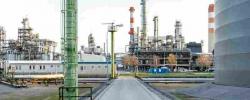在许多分析实验室中,增加液相色谱分析的样品吞吐量的选项是非常可取的。这在高样本量或时间紧迫的环境中尤其重要,如过程检测、临床、法医或兴奋剂实验室。除了完成更多工作和更快地输出数据外,还有其他好处,如提高整体实验室效率、更好地利用仪器、增加分析能力和减少溶剂消耗。这篇简短的文章演示了如何使用现有的HPLC仪器以及在适用的情况下,通过升级到UHPLC来提高现有等度和梯度分析LC方法的吞吐量。
介绍
将LC应用的样品吞吐量最大化对许多实验室都很有用。通过将该方法定量转换为具有较小颗粒(全多孔或实心)的较短长度色谱柱,可以显著减少方法运行时间。提高样品吞吐量的原则是,在保持原有方法性能的同时,确保柱长(L)与粒径(dp)之比(L/dp)保持一致。这导致在缩短的时间内观察到类似的分离性能。软件LC方法转换工具(例如ACE转换工具)包括精确缩放方法参数所需的所有方程,包括注入量、流速、梯度剖面等,并在别处进行了描述[1],可以免费下载[2]。在不牺牲方法性能和/或稳健性的情况下,可以实现吞吐量的显著改进。除了减少分析时间外,还可以显著减少溶剂消耗。在将方法迁移到UHPLC的背景下,通常会讨论将方法转换为较短的色谱柱,然而,使用标准HPLC仪器也可以实现显著的改进,从而提高现有设备平台的利用率。
提高等容LC方法的样品吞吐量
图1简单概述了如何使用两个选项提高等容LC方法的样品吞吐量。最初使用150 x 4.6,5µm色谱柱进行分离,运行时间为35分钟,背压为66巴。通过将该方法转换为UHPLC柱(50 x 3.0 mm,
1.7 µm) on a UHPLC instrument, the run time is reduced to 4 minutes with a moderate pressure of 558 bar. This equates to a >8 times increase in sample throughput and a >88% reduction in the runtime. However, if UHPLC instrumentation is not available, sample throughput could still be more than doubled by using the existing HPLC instrument with a shorter HPLC column and smaller particle size (100 x 3.0 mm, 3 µm). In this case, sample throughput is >2 times better than the original method with run time reduced by 60% to 14 minutes at a reasonable 215 bar. From a solvent perspective, analysing 100 samples (excluding equilibration times, cleaning, shutdown methods etc.) would require
原始方法为3500 mL,UHPLC方法为500 mL,改良快速HPLC选项为994 mL。
提高梯度LC方法的样本吞吐量
图2A使用150 x 4.6 mm,5µm的色谱柱,显示了非甾体抗炎药的梯度分析。梯度表中的梯度后重新平衡时间为20分钟(或约13个柱体积)。可以将梯度法转换为新的UHPL格式或修改后的快速HPLC格式,以了解对样品吞吐量的影响。使用类似于图1的原理,以及软件翻译工具[2],可以将梯度法定量地转换为两种新的列格式。对于梯度法,还需要缩放梯度剖面并校正仪器驻留体积的差异,以确保使用新的柱格式获得相同的梯度分离和分辨率。表1显示了每种列格式上分离的原始梯度时间和重新计算的梯度时间。
The original HPLC separation in Figure 2, using a 150 x 4.6 mm, 5 µm column, has a run time of 34 minutes, but a total cycle time of 54 minutes due to gradient re-equilibration, with PMAX of 64 bar. Translating this to the UHPLC format gives a 3.6 minute run time and total method cycle time of 5.7 minutes with PMAX of 510 bar. This provides a >9 times increase in sample throughput and a >89% reduction in runtime / cycle time. The modified rapid HPLC format data in Figure 2C, has a new run time of 13.4 minutes and a total cycle time of 21.3 minutes (including equilibration) with PMAX of 193 bar. This represents a >2.5 times increase in sample throughput and a >60% reduction in runtime / cycle time. Solvent consumption for the total cycle times for each format (but excluding initial equilibration and shutdown methods) for 100 samples can be calculated as 5,400 mL, 718 mL and 1,515 mL for the original, UHPLC and modified rapid HPLC methods respectively.
结束语
使用简单的第一原理或自由软件工具,可以显著提高许多传统HPLC方法的样品吞吐量并减少溶剂消耗,从而提高实验室容量和数据输出速度。改进的程度取决于可用的实验室仪器;UHPL提供了令人印象深刻的数据,但改进的快速HPLC选项仍然值得考虑。在本文中,使用了等速和梯度示例来演示该方法,包括样本吞吐量、运行时间节省和溶剂节省的计算。在探索这些令人兴奋的潜在改进时,重要的是要记住,某些系统特性(色散、驻留时间、检测器设置等)应在实验中确定和考虑,以确保方法转换尽可能准确[4,5]。这些概念以及它们如何影响等高线法和梯度法转换也在其他地方讨论[6]。尽管在将现有方法迁移至UHPL的背景下经常讨论方法转换方法,但本文展示了如何进行重大改进,以最大限度地利用现有HPLC仪器。









暂无评论
发表评论